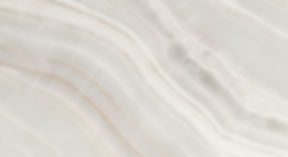
Turquoise has been the pinnacle of handcrafted jewelry and adornments for centuries, among a wide array of cultures around the globe. It's deep blue and green hues are known for their eye catching abilities, and depending on locality, some nuggets can include other complimentary minerals that make the mineral even more rare, valuable, and coveted. However, with such a popular mineral comes imitation. Turquoise is one of the most commonly faked or imitated minerals on the market, with a majority of it either being dyed howlite or straight up plastic! Thankfully, there are certain tests or factors to look for when determining if your turquoise is real, dyed, or entirely lab created, which we have outlined for you below!
To begin, here's some basic mineral facts about turquoise:
- It has a mineral hardness of 5-6, meaning it is not scratched easily
- It is a copper mineral
- It is void of any carbonates , meaning it will not react with acid.
- It has a waxy luster
Stabilized Turquoise: Before we go into imitation and enhanced turquoise, we must establish what stabilized turquoise is and how it is different from the fake stuff. When it comes to jewelry-grade turquoise, most of it has been stabilized with epoxy. This stabilization is necessary to make low grade quality turquoise (the majority of turquoise mined) hard enough to be shaped and polished. Turquoise is known to be a relatively soft and porous stone, which means it is susceptible to environmental factors such as heat and humidity which can either change the color of the stone or its density. The epoxy fills the voids and porous areas of the turquoise in order to enhance the stones density and preserve its color. Only the highest grade turquoise, such as the material from the Blue Moon mine, is able to be shaped and polished without stabilization due to its density and lack of porosity.
Now that we have established what stabilized jewelry grade turquoise is, let's move on to the fake stuff (yuck!)
Dyed Turquoise: It's estimated that about 90% of "turquoise" on the open market is in fact, dyed howlite. Howlite is a white stone that has black mineral veins that are similar to that of turquoise. Therefore, when the stone is dyed it is identical to turquoise. The first red flag when it comes to dyed turquoise (or any imitation turquoise) is the price. Authentic turquoise is usually pretty expensive even when bought wholesale. If the price seems to cheap to be true, then it usually is. If you suspect that your turquoise has been dyed, there's two major tell-tale tests you can do.
Acetone: This involves either soaking your stone in acetone, or rubbing part of the stone with acetone to see if any color comes off. If it does, this means you have a dyed stone.
Destructive test: This test works better if you have large chunks or nuggets of the stone rather than ones already set into jewelry. With dyed howlite, the color only saturates the surface and does not sink into the middle. With a lapidary saw, you can cut directly into the stone to see if the color is present throughout the whole specimen. If the core is colorless, you have a dyed stone.
Imitation Turquoise (Plastic/Resin): In just about every boutique and corporate fashion store, you will see recreated imitation turquoise necklaces, rings, bracelets, etc. Necklaces that are $20 with a plethora of "turquoise gemstones". Often times, it's relatively easy to distinguish a plastic or resin-made imitation from real turquoise, especially when considering the price and place. However, some deceptive dealers will go to extra lengths to make the imitations seem more real such as adding metal to make the stone more heavy. The quickest way to telling a plastic or resin-made imitation is to take a hot needle or pin to the surface of the stone. If it begins to melt or produce a burnt plastic smell, it's either plastic or resin. Simple enough!
Trade Names: The biggest kicker to fake turquoise are the trade names that it hides behind. For seasoned buyers, simply just knowing the name of imitation or dyed turquoise will save a great deal of time and money. Below are some of the most common imitation trade names.
Turqurenite – dyed howlite or dyed magnesite.
Buffalo Turquoise (not to be confused with White Buffalo Turquoise) - dyed howlite
Viennese Turquoise - Artificially blue-tinted glass
Fossil Turquoise - Odontolite
Ivory Turquoise - Odontolite
Sacred Turquoise - Smithsonite
Utah Turquoise - Variscite
African Turquoise - Spotted Jasper
We know how easy it is to be swindled when in the presence of such beautiful minerals (real or not), therefore we hope that this simple yet comprehensive guide can help you achieve the most out of your turquoise buying experience!
Rock on and remember to #doitfortheGRAM !

